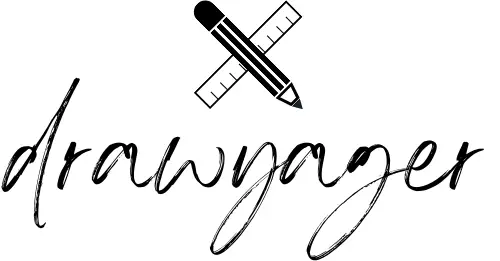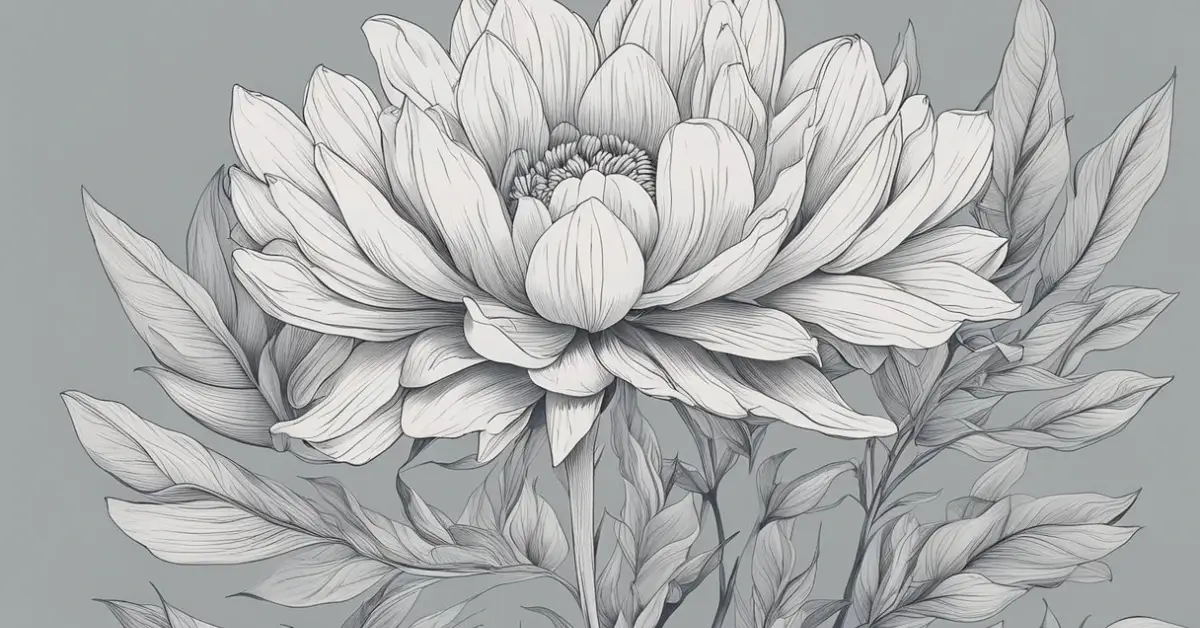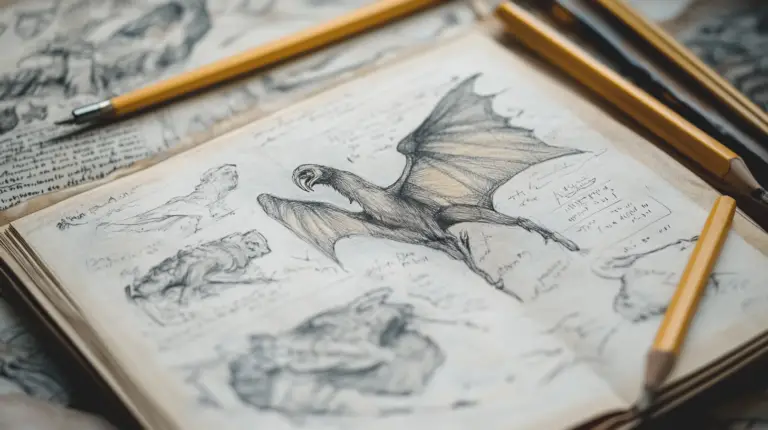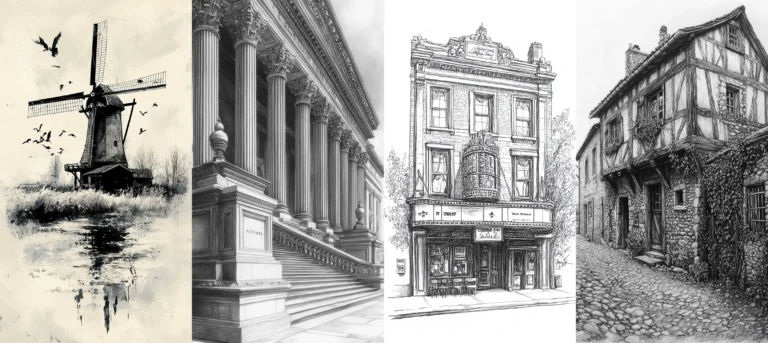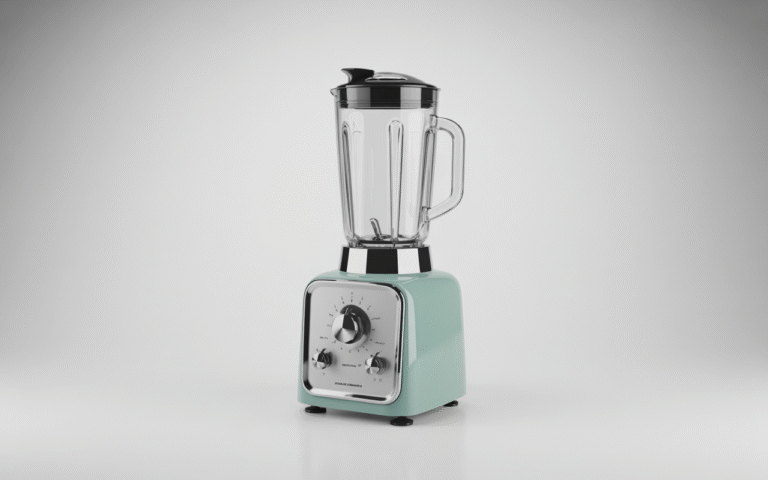Crafting eye-catching depictions of flowers presents an excellent chance for personal expression while enhancing the beauty around us. Regardless of whether you’re an experienced illustrator or a novice trying your hand at drawing for the first time, creating attractive floral arrangements brings joy and aids in emotional restoration. With the boundless variety of species, colours, and forms available, the potential for creativity knows no bounds.
In this article, we’ll explore some of the best techniques and ideas for creating captivating and elegant flower drawings. From simple sketches to intricate minimalist masterpieces, our goal is to inspire you to unleash your creativity and develop your artistic skills. Let’s dive into the world of aesthetic flower drawing and see what beautiful floral creations await us.
Basics of Aesthetic Flower Drawing
Aesthetic Flower Drawing is a popular and enjoyable hobby that many people enjoy. In this section, we will discuss the basics of aesthetic flower drawing, including the materials needed and how to choose the right flower. By following these simple steps, you can create beautiful and minimalist flower drawings that will impress your friends and family.
Materials Needed
To begin your Aesthetic Flower Drawing journey, you will need the following materials:
- Sketchbook or drawing paper
- Pencils, pens, or fine-tip markers
- Eraser
- Ruler or straight edge (optional)
You can experiment with different types of drawing tools, such as colored pencils, charcoal, or watercolor paints, to find what suits your personal style.
Choosing the Right Flower
When it comes to Aesthetic Flower Drawing, the possibilities are endless. Here are a few guidelines to help you choose the right flower for your drawing:
- Start with simple flowers: If you’re a beginner, you may want to start with easy-to-draw flowers like the daisy, which has simple exterior lines and doesn’t require much detail in the center.
- Choose flowers with distinguishable shapes: Flowers with distinct shapes, such as tulips or sunflowers, can be easier to draw and visually striking.
- Consider the level of detail: Some flowers, like roses, can be more complex to draw due to their intricate petals and pattern. If you’re looking for a more minimalist design, opt for flowers with less detail, like a daffodil.
Remember, there’s no right or wrong choice when selecting a flower to draw – it’s all about your personal preferences and the level of complexity you’re comfortable with. Happy drawing!
Sketching Techniques

When it comes to aesthetic flower drawing, the secret to creating beautiful artwork lies in understanding proportions, adding details, and capturing textures. Let’s dive into these techniques and explore how they can take your sketches to the next level.
Understanding Proportions
A key aspect of capturing the essence of a flower in a drawing is to understand its proportions. Start by observing the flower’s shape and size, and how its petals are arranged around the center. Sketch a light pencil outline of the flower’s general form before diving into more intricate details. This will help you establish a base to build your drawing upon, ensuring the final result is both realistic and aesthetically pleasing.
Details and Textures
Once you have established the basic proportions, it’s time to work on the details and textures that bring a flower to life. Pay close attention to the patterns and shapes on the petals, as well as the veins that run through them. Add shading and texture to create depth and dimension in your drawing. Use a combination of pen, pencil, or watercolors to enhance the look of your final piece. Remember, practice makes perfect. The more you work on your aesthetic flower drawing skills, the more confident and skilled you will become in capturing the essence of nature’s beautiful blooms.
Adding Colors to Your Piece
When it comes to aesthetic flower drawing, adding colors can make a huge difference in the final work. In this section, we will discuss how to combine colors effectively and explore some coloring techniques that can help elevate your flower drawings.
Combining Colors
Choosing the right color combinations can greatly impact the overall feel of your drawing. To create a pleasing color palette, start by selecting a few main colors for your petals and leaves. Next, pick one or two shades lighter and darker to use for shadows and highlights. This will give your drawing depth and make it more visually appealing.
Experimenting with different color schemes will help you find the perfect combination for your project. Don’t be afraid to try unconventional pairings or play with contrasts. Remember, keeping a limited palette can make your aesthetic flower drawing look more cohesive and harmonious.
Coloring Techniques
There are various techniques you can use to add color to your aesthetic flower drawings, and finding the one that works best for you may require some experimentation. Here are a few methods to consider:
- Layering: Start by applying a base color and then gradually build up layers of other colors to create depth and texture. This works well with colored pencils or watercolors, as you can blend the colors together to achieve a seamless transition.
- Blending: Creating seamless and smooth transitions between colors can be achieved by blending. Use a blending tool, such as a blending stump or your finger, to mix and merge the colors on the paper. This technique works well with colored pencils, pastels, and some markers.
- Stippling: This technique involves using small dots or marks to create color variations and texture. It works well for creating a more textured look, such as the details on petals. Stippling can be done with pens, markers, colored pencils, or paints.
Choosing the right technique may depend on the type of medium you’re working with, as well as your own personal preferences and style. Keep practicing and refining your skills, and you’ll soon discover the best way to add colors to your aesthetic flower drawings to make them truly stand out.
Advanced Techniques

In our journey to master aesthetic flower drawing, we’ve reached a point where we want to delve into more advanced techniques. In this section, we will focus on two crucial aspects: Shading and Lighteningand Drawing from Different Angles. These techniques will elevate your flower drawings, adding depth and dynamism to your artwork.
Shading and Lightening
Shading plays a significant role in giving your aesthetic flower drawing a three-dimensional, lifelike appearance. To achieve this, we need to pay close attention to the direction of the light source. Keep in mind that the areas directly facing the light are the brightest, while the parts hidden from the light are darker.
We can start by lightly sketching the outline of the flower and establishing the direction of the light. Then, use a pencil or pen with varying pressure to create different shades of gray. As we progress, be sure to blend the shades seamlessly, creating gradients between the darker and lighter areas. This technique enhances the flower petals’ texture and creates a more captivating illustration.
Drawing from Different Angles
Drawing flowers from various angles brings a unique and fresh perspective to our aesthetic flower drawing. We should practice sketching flowers from above, below, sideways, and even in unusual positions. This approach allows us to capture the essence and intricacies of the flower more realistically.
To achieve this, we can use reference images or observe real flowers from different angles. As we sketch the flowers, focus on the essential shapes and lines that define their structure. As we become more comfortable with the process, our drawings will become more natural, making them even more appealing.
In conclusion, mastering these advanced techniques will significantly elevate our aesthetic flower drawing skills. Remember, practice makes perfect, so don’t hesitate to experiment and try new things as we continue to improve our floral illustrations. Happy drawing!
Inspiration and Creativity
Aesthetic flower drawing is a form of art that inspires and fosters creativity in many artists. In this section, we’ll explore two methods of finding inspiration to create your own unique, aesthetic flower drawings: studying real flowers and exploring different styles.
Studying Real Flowers
One of the best ways to capture the essence and beauty of flowers in your drawings is to observe and study real flowers. Visiting a local botanical garden or simply taking a walk in nature can provide you with an abundance of floral inspiration. Pay close attention to the colors, textures, and shapes of flowers, and try to incorporate these details into your drawings.
Additionally, you may find it helpful to take photos of the flowers you observe, so you can reference them later while drawing. This will enable you to explore various angles and compositions, allowing you to create unique, aesthetically-pleasing flower drawings.
Exploring Different Styles
Another way to spark your creativity and improve your aesthetic flower drawing skills is to experiment with different styles and techniques. Here are a few ideas to get you started:
- Line art: Minimalist and elegant, line art focuses on using simple lines to convey the shapes and contours of flowers. This style can be seen in minimalist aesthetic flower drawings and is perfect for those who enjoy simplicity in their art.
- Sketching and doodling: Let your creativity flow freely by sketching and doodling flowers. Play with different line thicknesses, shading techniques, and compositions to develop your own unique style. Check out the aesthetic flower drawing ideas for inspiration.
- Colorful illustrations: Bring your flowers to life with vibrant colors and intricate details. You can use various mediums, such as colored pencils, markers, or watercolors, to add depth and dimension to your drawings. Take a look at these cool flower designs for inspiration.
By exploring real flowers and different artistic styles, you can develop your own unique approach to aesthetic flower drawing, resulting in captivating and imaginative artwork that showcases your creativity.
Our Tips Regarding Aesthetic Flower Drawing

Aesthetic Flower Drawing is a fantastic way to express creativity and unwind after a long day. It can be a fun, relaxing hobby or even turn into a profession for some. In this section, we will provide some tips to help you create beautiful and minimalist flower drawings.
To kick things off, starting with simple flowers like the daisy can be a great choice for beginners. Its exterior lines are easy to identify and draw, allowing you to get comfortable with the basic techniques. You can also decide whether you want the center of the daisy to be minimalist or more intricate, giving you creative control.
Drawing flower gardens is another great idea to flex your artistic muscles. You can practice drawing various flowers and creating different shapes and sizes. Remember to add elements like butterflies or bees to make your drawing feel more alive and dynamic.
Roses are a classic choice for Aesthetic Flower Drawing, even though they can be a bit challenging. Take your time, and try to break down the floral structure into simple shapes.
Don’t forget to experiment with different drawing styles. One idea could be to draw a paw holding a flower, giving your artwork a unique and adorable touch. You can take inspiration from Pinterest to find endless ideas and techniques for creating aesthetic flower drawings.
Finally, remember that practice makes perfect. Drawing flowers consistently will improve your skills and open up your imagination to new artistic ideas. Enjoy the process and let your creative juices flow as you dive into the world of Aesthetic Flower Drawing.
FAQ – Aesthetic Flower Drawing
What is the prettiest flower to draw?
The rose is often considered one of the prettiest flowers to draw due to its intricate petals and classic, romantic association. Its layers and folds offer artists the opportunity to showcase their skills in creating depth and detail. Other flowers such as cherry blossoms, tulips, and sunflowers are also popular choices for their distinct and aesthetically pleasing appearances.
How do you draw a simple wildflower?
To draw a simple wildflower, start by sketching a thin, slightly curved stem with leaves. At the top of the stem, create the flower by drawing small, irregularly shaped petals radiating out from a central point. Add details such as lines on the petals and leaves to give the wildflower a more natural and detailed appearance.
What are some easy flowers to draw?
Some easy flowers to draw include daisies, tulips, and sunflowers. Daisies can be drawn with simple, rounded petals radiating from a circular center, while tulips can be depicted as a U-shape with wavy edges to represent the petals. Sunflowers are also beginner-friendly, consisting of a large circle filled with small dots for seeds, surrounded by numerous elongated, oval petals.
What are your tips for Aestethic Flower Drawing? Let us know in the comments!
